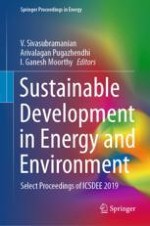This book presents select peer-reviewed proceedings of the International Conference on Sustainable Development in Energy and Environment (ICSDEE) 2019. The focus is on novel research in renewable energy resources and environmental issues and their implementation in augmenting sustainable development. This book includes chapters on solutions to problems faced by countries across the globe in the energy sector, pollution treatment processes, and other socially relevant topics like the possibility of extracting energy from the inexhaustible waste stream, waste disposal, waste management etc. This book will be useful for students, researchers as well as professionals interested in sustainable technologies, green energy, and biotechnology.
